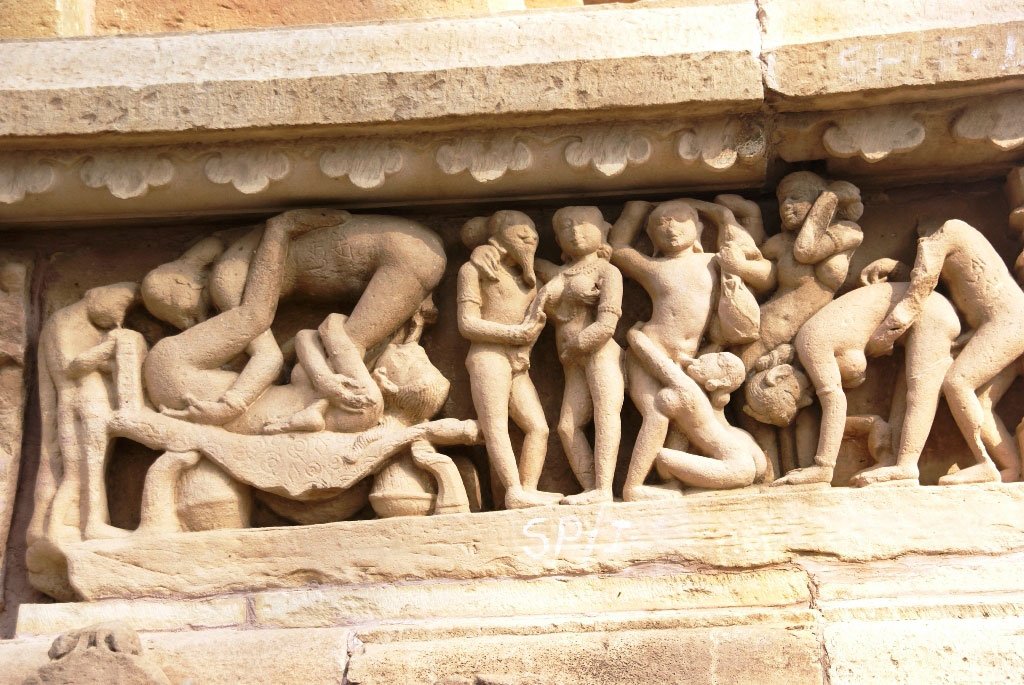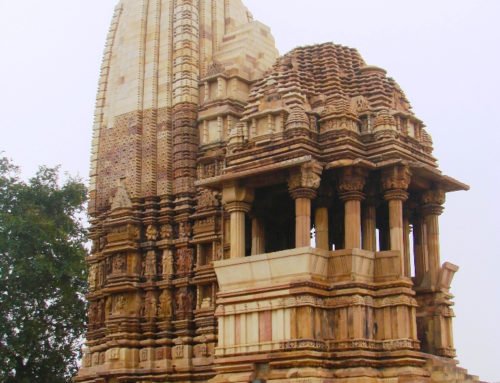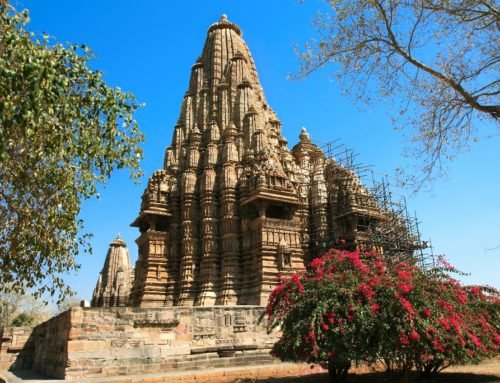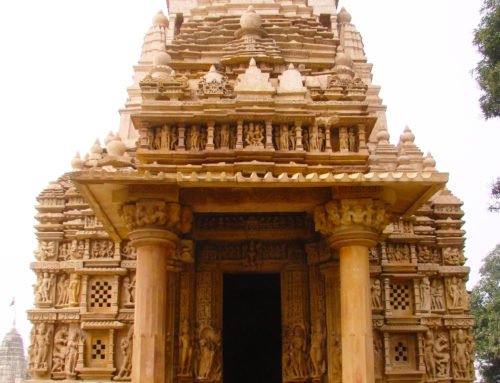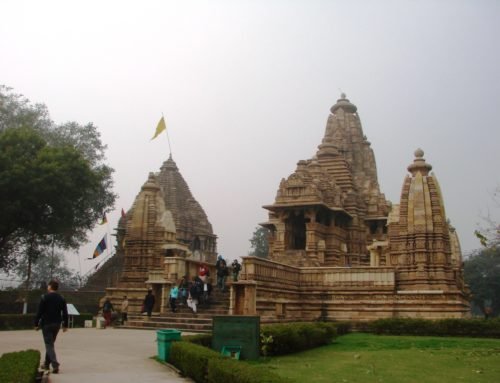Overview
- Main Attractions: Khajuraho temples & sculptures
- Best Time to Visit: Late October to early March
- Local Specialty: Temples
- Travelled By: Train, auto rickshaw
- Cost: $$
- Duration of Stay: 2 days
- Location: Madhya Pradesh, India
Author Reviews[display_rating_item_results rating_form_id=”4″ rating_entry_ids=”1″ show_category_filter=”false” show_options=”true” result_type=”star_rating” preserve_max_rating=”true” show_title=”false” show_count=”false” ]
Total Rating: [display_rating_result rating_form_id=”4″ show_count=”false” show_rich_snippets=true] [accordions load=”1″] [accordion title=”User Reviews” last] [display_rating_item_results rating_form_id=”5″ show_options=”true” result_type=”star_rating” preserve_max_rating=”true” show_title=”false” show_count=”true” show_rich_snippets=true] [/accordion] [accordion title=”Add Review”][display_rating_form show_email_input=”true” show_comment_textarea=”true” show_name_input=”true” rating_form_id=”5″] [/accordion] [/accordions]
Summary
Our memories of Khajuraho will remain fresh in our minds – spectacular temple architecture with plenty of erotic sculptures seen nowhere else in India. Khajuraho is akin to the Taj in India – a masterpiece of art that is unique, beautiful and will leave a lasting impression. Clearly, a ‘must visit’ on any trip to India.
Khajuraho: Our Experience
9th January, 2014 (Day 1)
Of the 85 temples that were built by the Chandela kings in the 9th and 10th centuries, only 25 temples can be seen today. These temples have been grouped into three sections based on their geographic location – Western, Eastern and Southern. The Western Group of temples are by far the most beautiful and were some of the earliest to be built. We started our tour at Lakshmana Temple, one of the three largest temples in Khajuraho.
What caught our attention and the attention of every other tourist there that morning were the erotic sculptures on the south facade of the temple. There was a highly gymnastic orgy that reminded me of the Kama Sutra poses, including one gentleman proving that a horse can be a man’s best friend, while a shocked figure peeked out from behind her hands. Being the first temple we saw, it was also my favourite of all the temples in Khajuraho.
[singlepic id=4022 w=720 h=560 float=center]
The second temple we saw that morning was Kandariya Mahadeva Temple, the most developed, largest and tallest temple in Khajuraho. It represents the pinnacle of Chandelan temple art and architecture as it is well-known for its grand dimensions, its complex yet perfectly harmonious composition, and its exquisite sculptural embellishment. It is clearly a grandiose temple with soaring sikharas (spires) and exquisite carvings on both its outer walls as well as its interiors. While it’s easy to see the sculptural works on the walls outside, the temple interior is a bit dark to appreciate the sculptures in its entirety. Nevertheless, the highlight of the sculptures at this temple is the ‘Handstand Sculpture’ located on the south side of the temple wall.
[singlepic id=4023 w=720 h=560 float=center]
We spent the rest of the morning wandering around the Western Group of temples. In the afternoon, we stopped at Lassi Corner for a glass of chilled lassi and a bite to eat. In addition to making the best lassis in town, they also make really delicious Aloo parathas (fried Indian flat bread stuffed with spicy potato) which are my favourite. After a filling lunch, we spent the afternoon walking around town.
[singlepic id=4018 w=720 h=560 float=center]
In the afternoon, we made a pit stop at the Archaeological Museum for a close inspection of some of the sculptures collected from the temples in the area as well as some masterpieces from other temples around the country.
[singlepic id=4005 w=720 h=560 float=center]
Following the Archaeological Museum, we made a beeline for the Adivart Tribal and Folk Art Museum located a few kilometres out of town. Although not a popular attraction, it has a collection of interesting tribal and folk art not seen anywhere else. It reminded me, in a way, of the Aboriginal art that we have in Australia which is very unique is its art form and its use of traditional patterns and colours.
[singlepic id=4017 w=720 h=560 float=center]
[singlepic id=4024 w=720 h=560 float=center]
It was almost sunset when we got back to our hotel for a short rest and relaxation before dinner. Unsure about where to have dinner that night, we ended up at Blue Sky Restaurant on Main Road after scouring the street for a nice, mid-range restaurant. What intrigued us about this restaurant was the tree-top dining area that overlooked the Western Group of temples. Even though you have to pay a bit extra to dine in the treehouse, it’s so popular that it was filled when we walked into the restaurant. Although we had a great view of the temples and the sound-and-light show that lit up the temples in many different colours, we were a bit disappointed with the quality of the food and overall lack of service.
10th January, 2014 (Day 2)
[singlepic id=4008 w=720 h=560 float=center]
Our day started off with a nice hot breakfast at the road side eatery next to our hotel. A nice plate of hot Chole Bhature was the perfect start to the day. Since we had seen the Western Group of temples the day before, we spend the day walking around the Eastern and Southern Group of temples.
[singlepic id=4009 w=720 h=560 float=center]
[singlepic id=4025 w=720 h=560 float=center]
The Eastern Group is divided into two sections – a group of Hindu temples and a Jain enclosure for Jain temples that strangely seem to resemble closely the Hindu temples seen nearby.
The highlight for us among the Hindu temples in the Eastern Group was Vamana Temple, dedicated to the dwarf incarnation of Vishnu. There are some lovely sculptures of sura-sundaris (nymphs) on the walls of this temple, but I have to admit that the temples in the Eastern Group are second in beauty and excellence to the Western Group of temples.
[singlepic id=4026 w=720 h=560 float=center]
I have a huge fascination with Jain temples particularly the ones carved out of marble. Unfortunately, the Jain temples of Khajuraho are similar in appearance to their Hindu counterparts standing nearby. Our favourite is Parsvanath Temple which is the most well preserved and largest of the Jain temples in this enclosure. There are also a couple of sura-sundari sculptures that are worth mentioning here. This temple has some of the best known and best preserved non-erotic yet graceful sura-sundaris – one applying kohl (eye make-up) and another removing a thorn from her foot, on the south façade; one tying ankle-bells on the north façade.
[singlepic id=4027 w=720 h=560 float=center]
After visiting the Eastern Group of temples, we made our way along a dirt track to the Southern Group located on the outskirts of town near the Khadar River. These are the least visited due to their location as well as the inferior craftsmanship of the temple sculptures. These temples were the last to be built at a time when temple building was waning and the artistic genius of the craftsmen were deteriorating.
Those heading to Chaturbhuj Temple to see erotic sculptures will be sorely disappointed as this is the only temple in Khajuraho without any erotic sculptures. While there is nothing magnificent about this temple, its location on open land makes for a scenic backdrop; also visiting here around sunset will provide great views.
[singlepic id=4028 w=720 h=560 float=center]
Another temple in the Eastern Group worth mentioning is Duladeo Temple. The sculptures here are repetitive and rather boring, but it is worth visiting for the beautiful vistas of the Vindhya Mountains in the background.
[singlepic id=4016 w=720 h=560 float=center]
One of the highlights of our visit to the Eastern Group of temples was the chance to walk through the villages on the outskirts of Khajuraho. This gave us a different perspective on life in Khajuraho as we got to see the locals go about their day-to-day activities – children playing on the streets while their parents worked hard at building a house to live in.
[singlepic id=4010 w=720 h=560 float=center]
[singlepic id=4020 w=720 h=560 float=center]
In the evening, we headed to the local hangout to try out some of the street food of Khajuraho. Aloo tikkis are a popular North and Central Indian street food option and happen to be one of my favourite street food snacks. Maybe it’s my love for Aloo tikkis but I have not come across one that I haven’t liked in India. This one was super delicious as the potato was crispy and well flavoured with a lot of additions including a hot, sweet and sour sauce, chopped onions, coriander and chick peas.
[singlepic id=4019 w=720 h=560 float=center]
[singlepic id=4007 w=720 h=560 float=center]
The other street food we tried that evening was Gol Guppas (also known as Pani Puri or Puchkas in other parts of India) which is a deep-fried puffed wheat ball stuffed with spicy potato and dipped in tamarind water. Another yummy street food option that I really love.
[singlepic id=4012 w=720 h=560 float=center]
This was the end of our journey in Khajuraho; we were off to our next destination – New Delhi. Our train left at 6:20 that evening, arriving in New Delhi early the following morning.
Our memories of Khajuraho will remain fresh in our minds – spectacular temple architecture with plenty of erotic sculptures seen nowhere else in India. Khajuraho is akin to the Taj in India – a masterpiece of art that is unique, beautiful and will leave a lasting impression. Clearly, a ‘must visit’ on any trip to India.


